The article considers the issue of growth in the field of social entrepreneurship. At a certain stage of their development, social projects, as well as commercial enterprises, must make choice regarding further growth. The creation of social enterprise business model and its successful approbation after entrance to the profit probably will create the desire for the further successful development, which will require the strategy for the development of business models. In this research work, four main possible scenarios are proposedfor the development of business models: scaling; replication; modification; creation of partner structures.
Creation of a business model of a social enterprise and its successful approbation after entering the profit may create the desire for further successful development which will require a strategy for developing the business model.
Our study allowed us to offer four main possible scenarios for developing a business model:
- - Scaling;
- - Replication;
- - Modification;
- - Creation of partner structures.
Scaling.
Scaling is an increase in the scope of activities within a single legal entity [1].
This type of strategy is the simplest version of the business model development, when a social organization works with a large number of people from the community, offers them a better service, seeking to change the situation on the local market in the direction of expanding its market niche.
If we consider a recreation center for the elderly "Sunny Day", then it can be an introduction to the complex of standard services provided by it, the services of a kinesitherapist or ergotherapist, which will certainly affect the satisfaction of clients with the quality of their life. Such a strategy can be called a strategy of growth "in depth", i.e. the best solution to the social problem. This will improve the organization's position in the market of special social services and will allow forming the image of a modern recreation center with a high quality of life.
In this case the change will concern one block of the business model - offer, the target group of clients remains the same (Figure 1).
At the same time, in the block resources - it will only require recruitment or outsourcing of one person who will conduct classes 2-3 times a week for 1-2 hours, depending on the number of groups and the capacity of the hall for classes. Individual classes can be offered which customers will have to pay for themselves.
If we plan to introduce an additional service related to new equipment (sauna, exercise bikes, etc.), which can be recognized as scaling up, as it involves improving the proposed solution to the social problem, providing a better service.
If our project attracts more people from the local community, then this can be considered a scaling in breadth.
Scaling as the simplest strategy for developing a business model is shown in Figure 1.
Replication.
Replication is associated with the application of an approved social business model in other geographic, economic and social conditions.
Geographic factors that affect the effectiveness of the model are, first of all, a city or a village.
For some business models, this is not critical. For example the NGO "Ray of Hope" which in both urban and rural areas provides similar developmental services for children with disabilities.
But in a number of cases, if a social enterprise solves a specific local problem, then such a development strategy is inappropriate due to the solutions found to the problem cannot produce results in another community. This applies, for example, to the differences between urban and rural lifestyles and may be due to the size of the population and, accordingly, the volume of demand from it for some type of service or goods. So, for example, in city you can create a hairdresser salon in which people with hearing impairments can work and serve, who find it difficult to find work with such a feature on the profile of a hairdresser and other related services. In general, such a salon serves people at lower, social prices and among its clients there may be elderly people and low-income citizens. In rural areas such a project simply cannot be started because a sufficient number of people with hearing impairment and wishing to provide hairdresser services and attendant, with a limited population will simply not be there.
Such restrictions for replication have such a social project as the Center for the rental of rehabilitation equipment and technical means of rehabilitation, which provides services for their selection and adaptation to
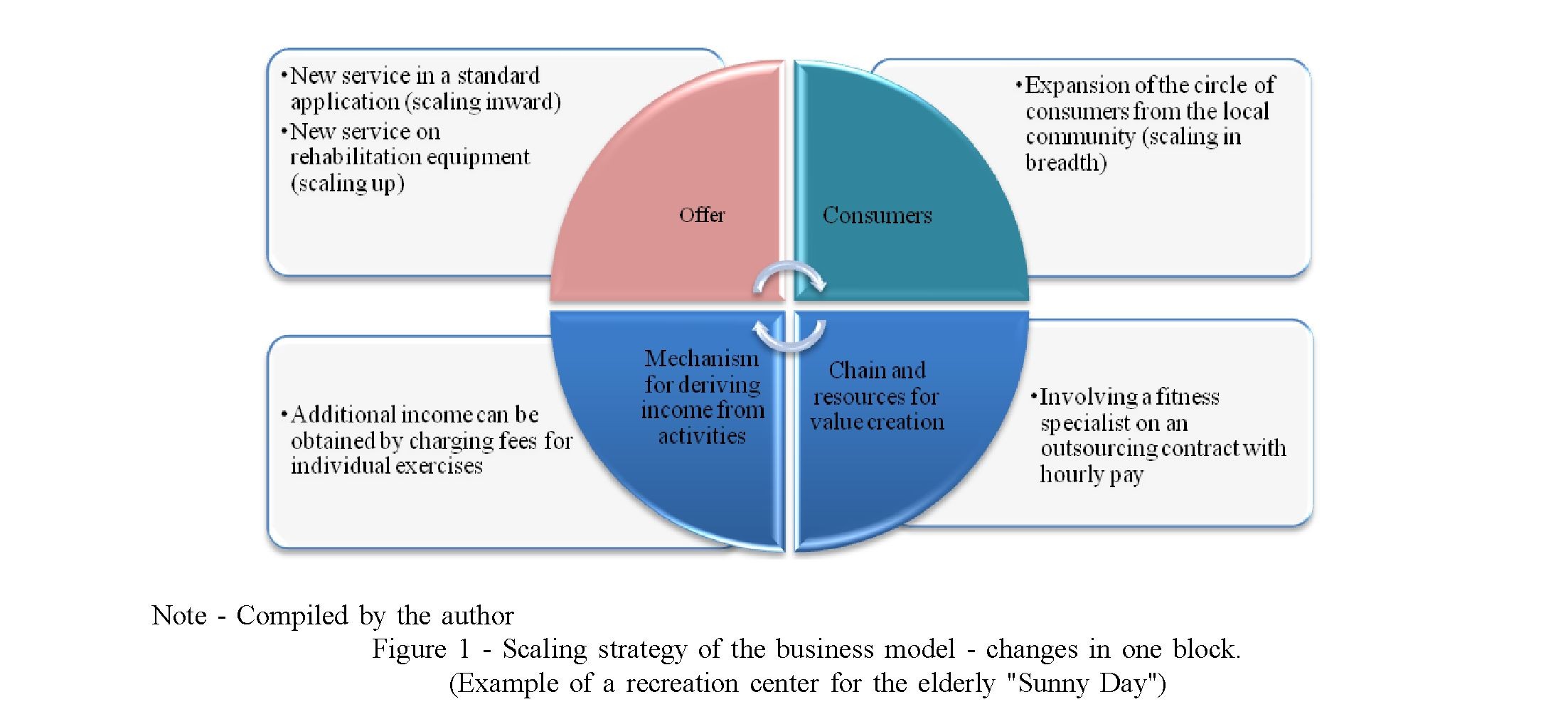
the needs of customers as well as their maintenance. Services are not only for people with disabilities, but for older people who have restrictions on movement. With a significant number of urban residents (200-300 thousand people) such a center can achieve selfsufficiency and function as a social enterprise without additional funding from outside, because the structure of the urban population is sufficiently diversified in terms of per capita income and there will always be families with medium and high incomes that need such services. At the same time, with a small number of clients, such a center will not be able to achieve self-sufficiency; for rural areas and small towns such a project may prove to be economically unprofitable. At the same time, in some cases, replication is not only possible, but also beneficial to the social entrepreneur, because it is possible to create and extract an effect from the scale of activity. If a public association or social enterprise already has a national network, the implementation of the replication strategy will be fully realized (Figure 2).
As a rule, the replication is associated with the expansion of the geography of activities, i.e. the implementation of an existing offer to other categories of consumers: geographically or by the principle of involving in consumption another target group, usually associated with the first target group, at which the offer has already been worked out. That is, in fact, the change is only for one unit - "Consumers".
For example, PF "Sport Сoncept", having worked out a business model at 2-3 sites, now has covered its services with 2 micro districts of the city, expanding the geography of its offer. On the same sites, they plan to conduct classes with children with disabilities, inviting specialists for this. In parallel, they attract adults to these sports grounds, not in the form of regular sports activities, but in the form of active rest after work and rest of the day off, but for a fee. Another example is the National Federation of Professional Combat and Sports Jiu-Jitsu Profi-Fight, a non-profit organization that deals with the development of this sport, has 10 founders and several sponsors (among them insurance company "Salem", LLP "Nuker", LLP "Naiza"). It realizes the project on opening in the orphanages sections for classes of ju-jitsu. Practically in every large or medium city of Kazakhstan, the federation has a branch, one of the divisions of which is responsible for orphanages. Classes are free of charge and coaches' salaries are covered from the income of other units that provide paid services for children in normal conditions.
Modification.
Modification is a creative reproduction of the existing business model based on the recombination of its elements.
Innovations in the creation of a new business model are no more than 10%, while 90% of innovative business models at first glance appear as a result of comprehension of existing experience, recombination and development of individual elements of the business model [2].
Since entrepreneurship is based on the creation of economic value and profit, the main problem is the ability to create an income generation mechanism that will act either in parallel with the creation of social value or will help to create it. Modification of the model involves the transformation of at least two elements of the business model seems to be a more complicated task, requiring preliminary work on the targeted development of a new version of the model.
For such characteristics of the model as tangible and intangible assets, investment sufficiency, long-term demand, a revenue-generating scheme with risk assessment and approximate revenue volumes, a marketing program, it should be possible to support a new project until it reaches an independent income.
For social entrepreneurship, taking into account its specifics and the nature of competitive advantages, based to a lesser extent on product and technological innovations, and to a greater extent on minimizing costs and quality of goods / services, the very nature of the transformation of the business model should take these features into account initially. So, the model of specialized fitness for the elderly on the basis of the recreation center "Sunny House" is a modified model #5 "The use of assets and competencies to the maximum". The scheme for modifying the business model is shown in Figure 3.
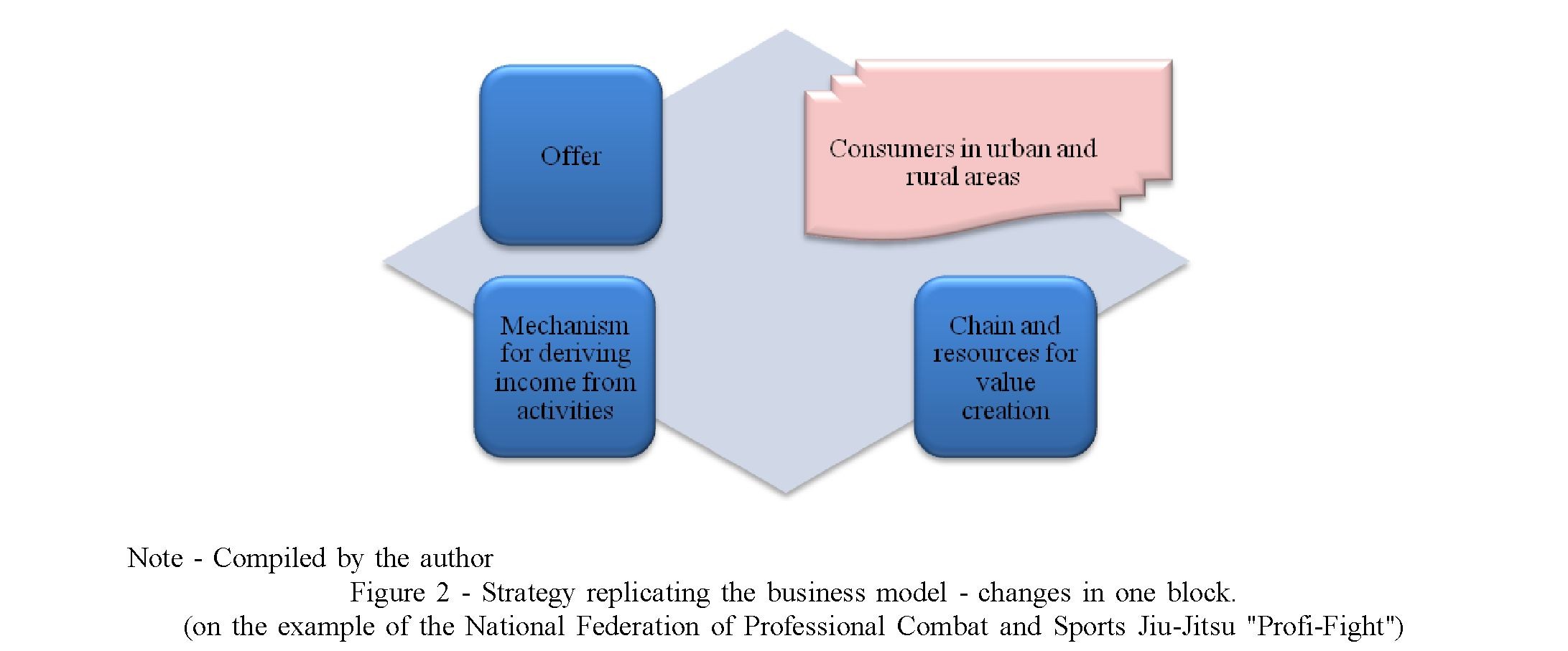
The marketing strategy is important to implement this modification that will provide a system of structured actions to identify a new group of clients, because unlike customers already living in a recreation center, these customers live in the district. Therefore, like at the beginning of any project, it is necessary to conduct a marketing research, identify a comfortable price, determine pricing policy, measures to stimulate demand, etc. As for the resources needed to start the project, its implementation is based on the existing material resources. With regard to material resources, it will require an increase in the hours of work of the trainer or another person will need to be accepted, which will depend on the number of clients in the new target group. In such a project, a significant role will be played by pricing policies and methods for determining costs, a system of discounts for customers wishing to pay for a longer course of study. It is possible to offer individual classes with specific rehabilitation after strokes, traumas and other special methods requiring training.
In general, we can say that the modification entails changes in at least two blocks of the business model, in this case the "Consumers" block and the "Offer" block, and in the future in all four. Changes in other blocks may be absent altogether or they are second-order changes that follow from the first two. So, maybe a new coach cannot be accepted, if the total active load on it does not exceed 30 hours and the number of each group in the class will not exceed 20 people. With regard to marketing and pricing, in this project they are a mandatory application that ensures the availability of the service and at the same time a certain profitability of the project. It is necessary to develop a system of prices and discounts to ensure the attractiveness of the offer. Another example of a growth strategy based on the modification of the model is the project "Sport Сoncept", which represents the development of the model #1 "Accessibility of the good with a standard offer".
The project is realized as a service of sports activities for children on well-equipped sports grounds in the microdistrict, in the immediate vicinity of the place of residence of the child and his family, which, of course, is an attractive arrangement. In combination with differentiated prices for children from ordinary, incomplete, low-income, large families, this makes it possible to have access to spatial and economic sports classes with coaches in 7 types of sports.The scheme for modifying the model is shown in Figure 4.
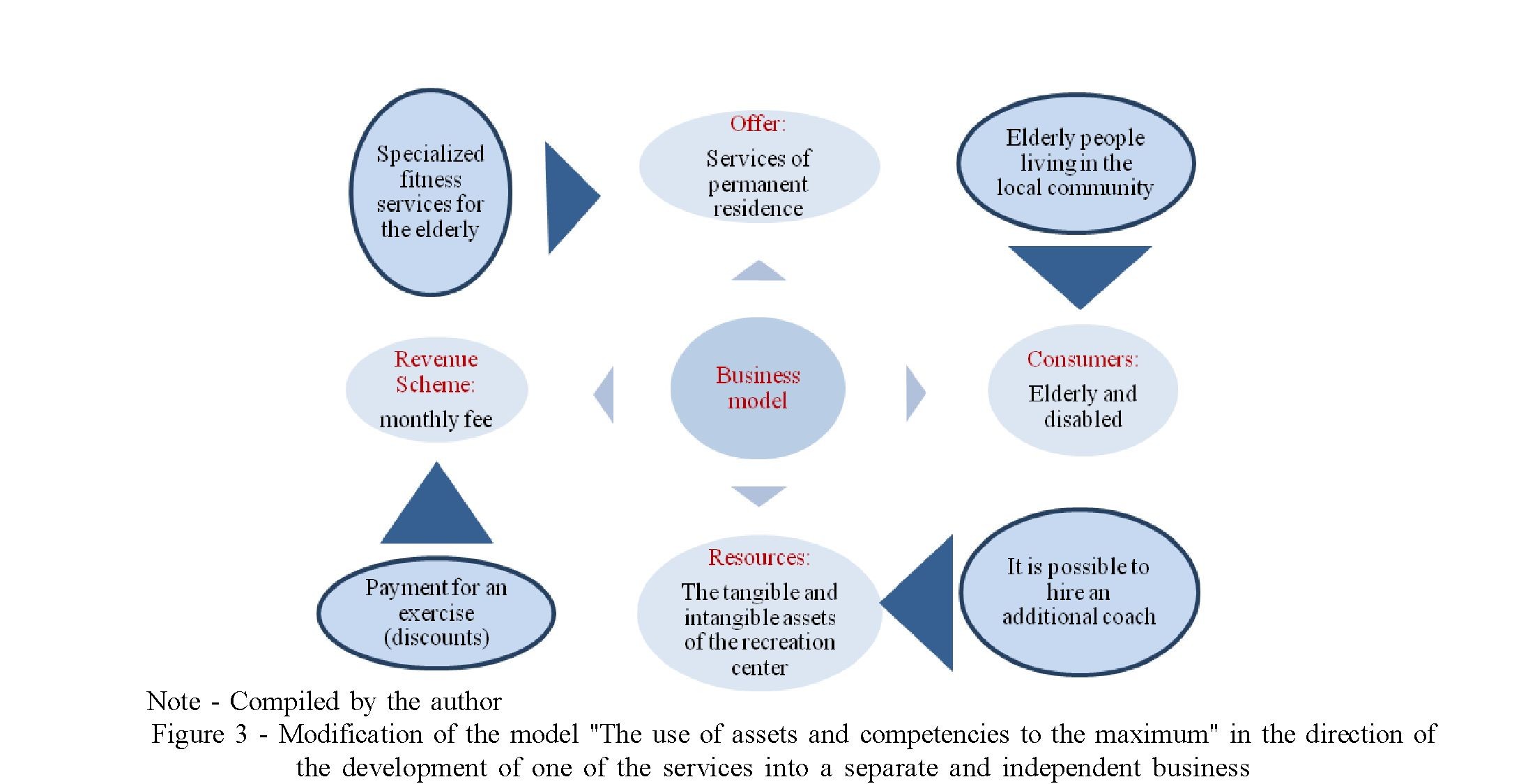
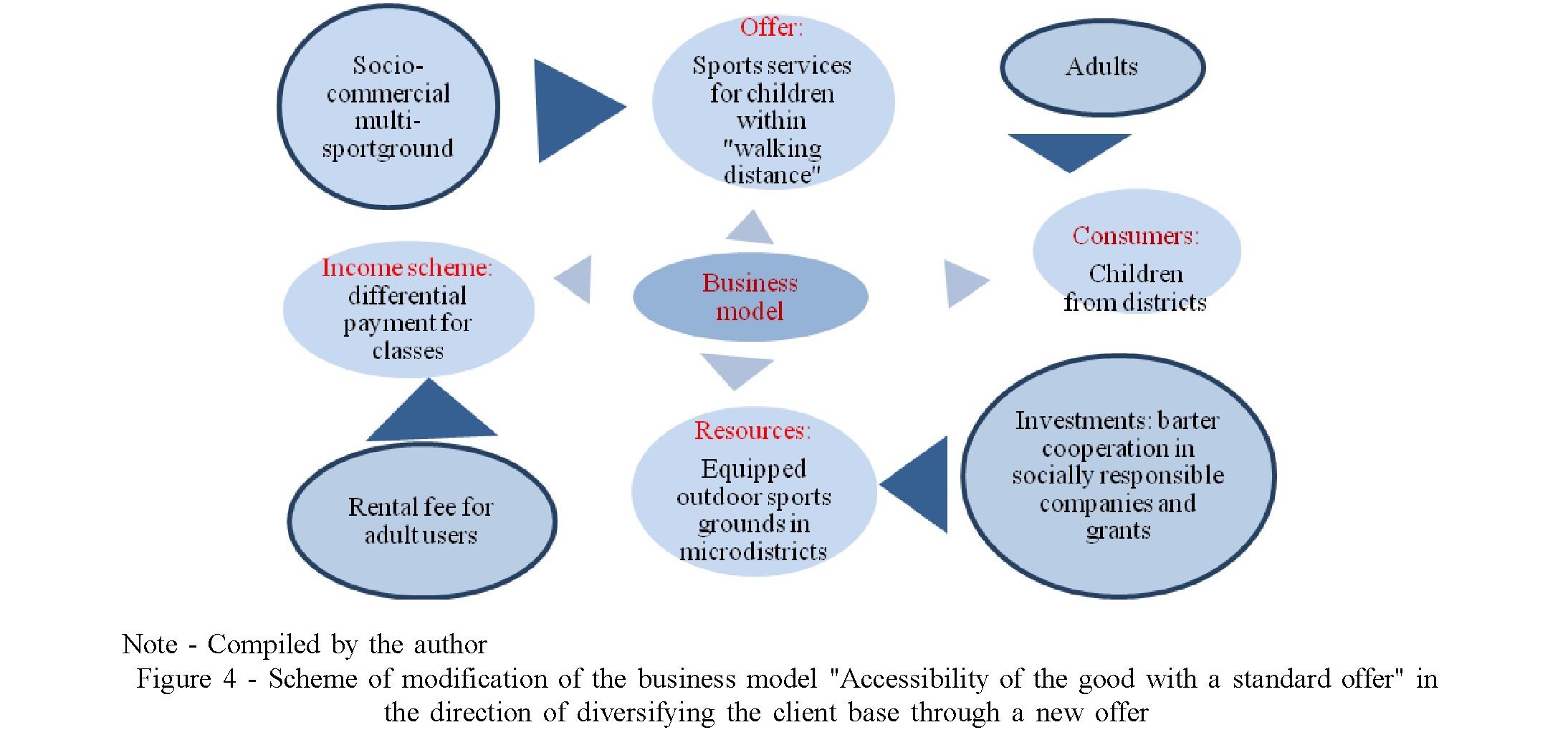
Basic changes in this business model go in three blocks:
- Offer - an opportunity for adult amateur courtyard teams to rent a multi-venue with the provision of the services of a consultant coach if necessary.
- Consumers - adult categories of users who live in neighborhoods and engage in sports in the evenings and weekends.
- Resources - creation of a new resource (multisport sites) with attraction of investments of socially responsible companies on a mutually beneficial basis (barter of services) and grant financing. In fact, this modification of the model is already innovative, because the technology of such venues in itself provides opportunities for volleyball, basketball, football, baseball and some other field team sports. Winter playgrounds are constructed as indoor with spectator seats which prevents them from covering with snow.
Creation of partner structures.
The strategy for creating partnership structures can be implemented if the company that is the founder of the social business is sufficiently stable and ready to share its knowledge, technologies, resources (including personnel) to expand the scale of social impact and address the social problem, not only in the local territory but also in other regions. In this case, the company is not so much going after new incomes, how many takes responsibility for solving the social problem in the territory of another region, taking into account its specifics.
From the point of view of creation of social value there is an acceleration of the processes of its production and providing accessibility to customers in the most organic for them physical and economic accessibility.
Here it is possible to use the following options for organizing social entrepreneurship, differing in management models: branch network, alliances, social franchising (table 1):
Table 1 - Possible strategies for developing a business model based on partner structures
|
Typesofpartnerst ructures |
Content |
Business modeld evelopmentstrategy |
Management Characteristics |
Termsofimplementati on |
|
Branchnetwork |
Network of units identical in terms of management and unification of business processes |
Scaling and replicating of activities through autonomous, but unified organizations |
Maximum centralization and total control of all processes, including financial |
Partner networks with the state and / or related social structures for the use of their tangible assets |
|
Alliances |
Development of business processes based on the partial use of partner assets |
Scaling, replication, modification of the business model due to the symbiosis of two or more partners with varying degrees of dependence |
The agreement between the parties regulates the use of assets, mutual obligation s, the content of the cooperation program |
Search for partners with independent assets and sources of financing, conclusion of agreements with them |
|
Social Franchising |
Distribution of the business model in different regions under one brand and strict control over its compliance |
Replicating and scaling to local conditions |
General brand and strict quality control of goods / services, the availability of social reporting parameters to attract customers and investors |
Preservation of a unified mission of the organization and prevention of loss of reputation |
|
Note - Compiled by the author |
||||
The branch network in social entrepreneurship functions in the usual sense for general economic practice, when the organization is created in another area for the territorial coverage of clients on a stationary basis. This is especially important for services and those clients who have physical or economic difficulties that limit their ability to meet needs.
The branch network uses all the advantages of unifying the business process worked out in the parent company, including: cost management, service delivery technologies, human resource development using the potential of the parent company, the use of common values and ethics of the company. This form helps the firm to conduct spatial expansion using local assets and human resources, but it has the strongest degree of control and centralization. Due to the latter circumstance, this method is the slowest, especially if it has to create independently tangible assets, which is the most costly part of social business. To implement such a strategy, a social entrepreneur needs partner networks either with the state or with related social structures whose material assets (premises, buildings) can be used to realize their mission of producing social value.
Thus, the Public Association "Ray of Hope" that provides developmental services to children with disabilities (Cerebral palsy), has extended its activities to the districts of the region whose residents have difficulties to visit such centers in the city. The partnership with state structures ensured the provision of free premises for the activities of the Child Development Centers in the state health organizations (district hospital-polyclinic in Botakara, Bukhar-Zhyrau district), secondary school (Osakarovka settlement, Osakarovsky district), library (Kievka, Nurinsk district), etc. Since services are provided to a certain extent free of charge for children under 18 years of age, for classes with clients over 18 years of age and additional classes, a fee is charged to cover the transportation costs for bringing children from remote villages to the district center. To carry out large-scale actions, the NGO "Ray of Hope" uses the House of Culture for people with hearing impairment on the basis of mutual agreement
without rent.Graphically, the branch network can be represented in the following form (Figure 5).
Alliances, thanks to the flexible form of the agreement, can be represented by a wide range of options, ranging from free cooperation to strictly regulated systems.
For example, the interactive educational and information complex "Eureka" (Saran city) was made possible through cooperation with a local firm that has its own tangible assets in the city where several classrooms, audiences, equipment and interactive can be accommodated. One can get services as a general education profile and get acquainted with the professions and etc. Rent is a symbolic, at the same time, the provision of free services for children of low- income families and disabled children is stipulated in the agreement. This project underwent a modification and became a social enterprise precisely in connection with cooperation with a commercial enterprise which demanded the free provision of children from needy children and invalids with a condition for renting premises.
The alliance is also the above-mentioned cooperation between the NGO "Temirtau Youth Club" and the city branch of the "Nur Otan" Party, which also provides its premises to this organization, and along with noncommercial activities, it also carries out commercial orders for the production of commercials, holiday design, website development and Other products with market potential. The implementation of this business model became possible due to the assets of partners. In this version, at number two, in addition to sharing assets, there are precedents of joint activities and obligations to fulfill a social mission. Another example of the alliance is the cooperation of the non-profit organization NGO "Children's Villages of Kazakhstan" (Temirtau) and NGO "Kenes", which using the assets of a children's village and with the participation of psychologists from NGO "Kenes", provide free (for target groups for the prevention of social orphanhood) and paid psychological counseling for families. In this version of the partnership, the most complete intersection of activities is observed, as two non-profit organizations implement the project involving the tangible assets of one and the staff of another, then in the full sense of the word together. Graphically, alliances can be represented in the following forms (Figure 6).
Social franchising has all kinds of features of classic franchising but also its own characteristics. Like the well-known model of franchising - the parent company passes a "business package", a scheme of a successful business model of another company that will act under one brand, which, as a rule, is the name of the organization. The peculiarity of the social franchise lies in the fact that the object of control are not only financial indicators and indicators of service quality, but also the parameters of social reporting. In general, it should be
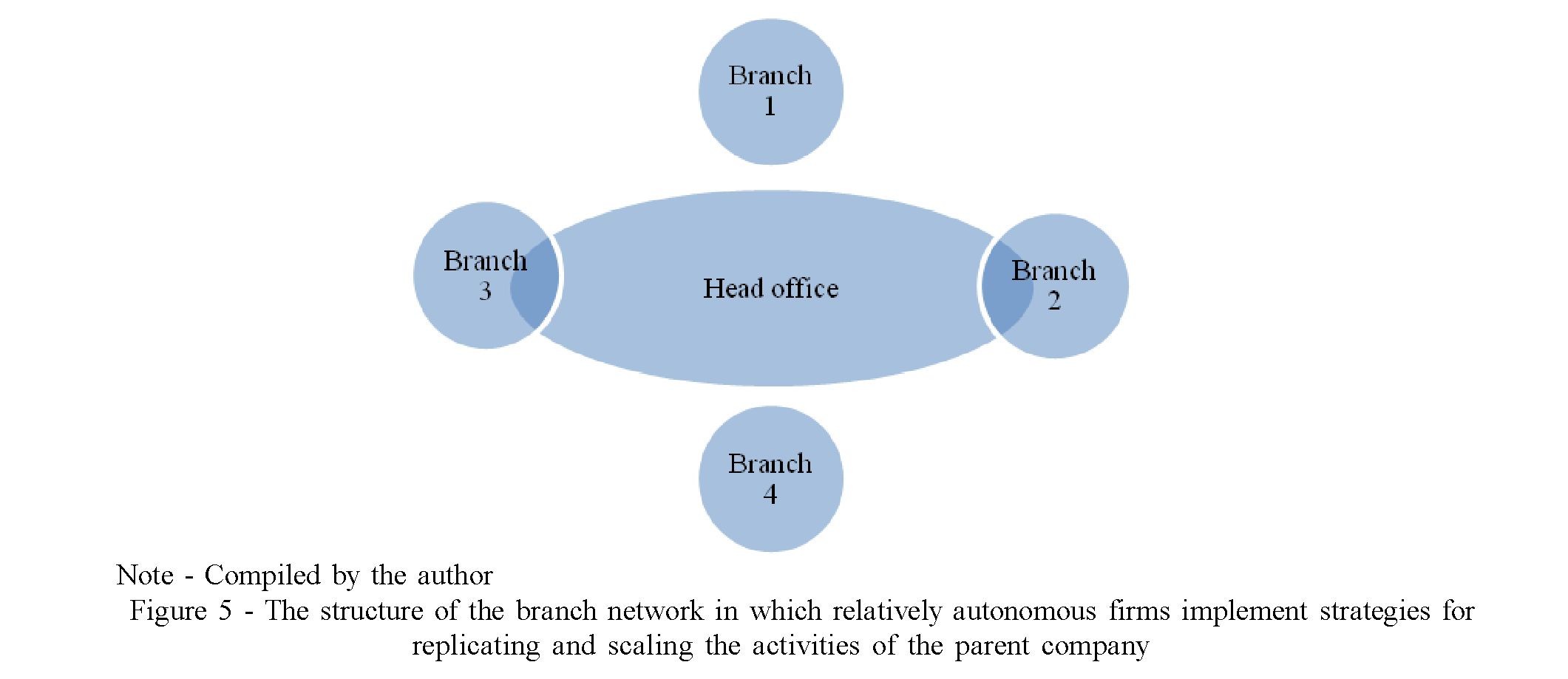

noted that franchising schemes have not been identified in our field study.
Thus, strategies for developing business models of social entrepreneurship can be presented in the following structure:
- - Scaling activity (attracting new customers for consumption of "traditional" or "new", usually complementary services). The development strategy requires changes in one or two blocks of the business model.
- - Replication of activities (geographical expansion and coverage of new local markets already approved offer). The development strategy requires changes in one or two blocks of the business model.
- - Modification of the business model. This development strategy requires changes in three or four blocks of the model and is the most complex strategy requiring a separate business plan, marketing program, recruiting staff to launch the project, assessing the possibilities of maintaining the project until profit.
- - Creation of partner structures is an integrated strategy that unites first-level strategies in different versions. A comprehensive strategy can be implemented in the options for creating branches, alliances and social franchising. In each of the complex strategies, replication strategies (new geographic areas), scaling (3 options), and modification of the business model may be involved. For example, the establishment of branches in rural areas may not just be replicating, but also require the modification of the business model to specific conditions (population size, demand in the market of goods / services, etc.)
List of references:
- N. Zvereva. Creation of a successful social enterprise. - Moscow: Alpina Pablisher, 2015. - 154 p.
- K.M. Christensen. The innovator's dilemma. How the new technologies kill powerful companies. - Moscow: Alpina Pablisher, 2016. - 254 p.